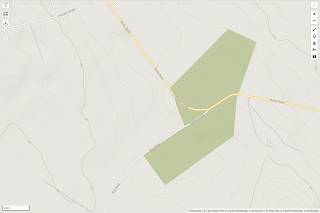What does the inside of a transient-brand power supply found extremely cheaply on marketplace-style, monopolistic web stores (usually under other brands) look like? Let's go over the outside, then dive in.
 |
Smudgy case, warranty void, and I had already taken some quick notes on the guts from popping the cover the first time.
|
What does it say? The manufacturer and part number XUNBUMA T-1000-12 followed by alleged regulatory markings of a fairly accurate CE mark and "RHOS" (the strangest take on EU RoHS I've seen in a while) and rounded out with the very abbreviated ratings AC Input: 110V 47/60 Hz, DC Output: 12V 83A. No FCC marking nor Part 15 statement.
My preliminary notes on the guts before I packed it up from my first opening:
- No PFC
- Single input diode bridge
- 4x passive secondary rectification
- Very long loops in switching current paths
Time to get onto the device pictures!
 |
Unexciting screw terminals for IO: line and neutral (AC), chassis ground, and three each of -V/+V. Voltage adjust potentiometer on the right side.
|
 |
Top off! Overview of what's inside with input filter and bulk capacitance on the open edge of the board then the fan and switching components along the case wall with heatsinks.
|
 |
AC input protection and EMC filtering up to the diode bridge
|
 |
| A closer look at the filter components |
The input filtering and protection immediately behind the AC input terminals consists of a single ceramic body fuse, X capacitors on either side of a common-mode choke, and two Y capacitors in the shadow of the choke. Directly in front of the diode bridge is an inrush limiting NTC thermistor with a relay for normal operation.
The high voltage bus is derived from voltage doubling the input through the diode bridge and dual electrolytic bulk capacitors. No PFC! Definitely a single-voltage-region type design, too.
Now, about getting a better look at the board components…
 |
The switching half-bridge devices are on a heatsink mounted to the case…
|
 |
And the screws must be hiding…
|
 |
Behind the label!
|
 |
Heck, there were two behind the label, then the one further to the right
|
 |
There we go, there's the support mechanism and heatsink screws freed from the case wall
|
 |
Board freed from the chassis along with an aluminum heat spreader between the switching FETs and the case wall
|
 |
Here are the half-bridge switching FETs on their lingering thermal pad with a small host of through-hole components for the gate drive
|
Device: Infineon 65F6041 in TO-247
 |
The high-voltage side control board mounted between the pair of bulk capacitors and the gate drive transformer
|
Device: ON Semiconductor NCP1252 in SOIC-8
The board label is NEL-1200-R24 and has the date 2019-05-08.
 |
Visible from the bottom side, the only feedback is a single optocoupler, presumably for voltage feedback. Two other positions could provide protection features, but are not populated.
|
The nearby soldering might not elicit confidence. No worries, try out the whole back of the board!
 |
The solder side of the board is a mess with sloppy solder, current augmentation wire in the output traces, a red bodge wire, and an additional capacitor.
|
 |
Up top with the 4 packages of dual diodes for passive output rectification there's also a little blob of wire or solder gently wedged under a power resistor. Reliable cooling with a combination thermal pad and white thermal paste!
|
Device: Taiwan Semiconductor MBR40100PT in TO-247
 |
The diodes' heatsink is independent of the chassis and screwed to the PCB for retention.
|
 |
The fan screws onto the opposite side of the case for airflow past the heatsinks
|
Device: Long Chang LC6025MB12 12V/0.18A DC brushless fan, marked with (improper) CE and kinda-close FCC.
 |
Fan control directly from the main output (since this is a 12V model) with an NTC on the output filter inductor and a couple transistors.
|
Devices: ST TIP127 in TO-220 (no heatsink) and unknown manufacturer C1815 / GRF011 in TO-92
Missing the little LM358 dual op-amp (if presuming it's a TI part) board on the secondary side behind the output pot. Might check out what it is if I decide to tear it out for component salvage.
Overall, it might work, but I sure wouldn't use it. At something like half the price of a reputable brand's fully-enclosed 1kW 12V power supply (consider the Mean Well SE-1000-12 at Digikey USD 190/ea, still without PFC or universal input range), you might think it'd get the job done to start, but it probably won't last. Or actually meet safety and EMC regulatory requirements.





















Comments
Post a Comment